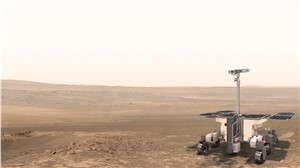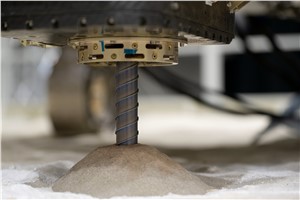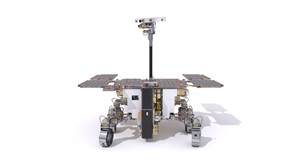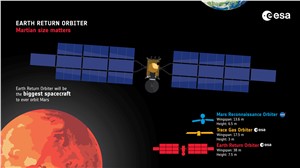




Europe’s first Mars mission, Mars Express, was driven by science – scientists set the requirements to get the best data for planetary research. Europe’s ExoMars programme has always had the ambition to marry exploration with science.
ESA’s vision is to send Europeans to Mars by 2040. Europe has renewed ambitions to prepare for the first human mission to Mars, using robots as precursors and scouts, in an independent and sustainable manner.
ESA is a key international partner in Mars robotic exploration. While partnerships remain a fundamental part of the roadmap to autonomy, ESA wants to lead Europe’s journey into the Solar System and to return the benefits of exploration back to society.

By Orbit Type (LEO, MEO, GEO, Others), by Architecture (Transparent Payload, Regenerative Payload), by Service Type (Fixed Satellite Service, Mobile Satellite Service, Broadband Satellite Service, Others), by End-User (Telecommunication, Government, Defense, Aviation, Others) and Region, with Forecasts from 2025 to 2034
Download free sample pagesEurope goes to Mars
ESA already has expertise in orbiting the Red Planet with Mars Express and the ExoMars Trace Gas Orbiter, or TGO, which is producing the most detailed inventory of atmospheric gases from Mars orbit since 2016. TGO also provides data relay services essential to transmit science and operational data and commands from/to the surface of Mars.
The Rosalind Franklin rover is facing a rebirth with a redefined mission to address the question of whether life existed or is still present on Mars. A new launch date in 2028 serves as a trigger for more autonomy, allowing ESA to invest in European industry to master the technologies needed for the journey.
In parallel, ESA has a strategic partnership with NASA to bring samples to Earth for detailed analysis in sophisticated laboratories. The joint Mars Sample Return (MSR) campaign will revolutionise our understanding of the Red Planet by returning scientifically-selected samples for study. This fully robotic technology demonstration will prepare Europe for sending humans to Mars.
Rosalind Franklin Mission
A new Rosalind Franklin Mission includes a European lander to bring the rover to the surface of Mars. The rover will search for evidence of past life on Mars thanks to its drill and scientific instruments.
Rosalind Franklin will be the first rover to drill two metres below the surface, acquiring samples that have been protected from surface radiation and extreme temperatures. The drill will retrieve soils from ancient parts of Mars and analyse them in situ with its onboard laboratory.
The mission will also serve to demonstrate key technologies that Europe needs for future planetary exploration missions. This includes the capability to land safely on a planet, to move autonomously on the surface, and to perform drilling and sample processing and analysis automatically. The rover will use novel driving techniques, including wheel-walking to overcome difficult terrains.
The design of a new European lander will reuse significant parts of the European-developed flight equipment from the previous Russian lander, such as parachutes, computer and the landing radar system.
While those items remain the same, other parts – the Entry Descent and Landing Module, its aeroshell, the landing platform, and the rover egress system – will be redesigned and built by European industry.
“The newly shaped Rosalind Franklin Mission will recover one of the original objectives of ExoMars – to create an independent European capability to access the surface of Mars with a large and sophisticated robotic payload. There is an exciting opportunity ahead for European industry,” says David Parker, ESA’s Director of Human and Robotic Exploration.
Mars Sample Return
Mars Sample Return is an integral part of ESA’s exploration programme, and will be the first to return samples from another planet.
The campaign is made up of several missions. The first phase is in progress: NASA’s Mars2020 Perseverance rover landed successfully on the Red Planet in 2021 and began gathering samples in an ancient river delta for potential return. The samples will help reveal the early evolution of Mars, including the potential for life.
Europe is providing the Sample Transfer Arm and the Earth Return Orbiter.
A European 2.5 metre-long robot will pick up tubes filled with precious soil from Mars and transfer them to a rocket for an historic interplanetary delivery. Able to “see”, “feel” and take autonomous decisions, its high level of dexterity allows the Sample Transfer Arm to extract the tubes from the rover, pick them up from the martian ground, insert them into a container and close the lid before lifting-off from Mars.
ESA’s Earth Return Orbiter will rendezvous with the container filled with martian samples and bring the material back to Earth at speeds higher than ever before. It will be the first spacecraft to make a round-trip to another planet, paving the way for a human journey.
Several European scientists are already part of the science team to advise on the sample selection for return and to prepare for the analyses once they are back on Earth.
The campaign is the result of decades of experience, and the latest in a series of increasingly complex missions to advance science and exploration beyond Earth.